Nara is a peaceful and welcoming city that boasts an impressive number of historically and culturally significant sites within its picturesque borders, on top of which it is the proud home of over 1,200 freely roaming sacred deer.
Located in the Kansai region of Japan, Nara is under an hour away from its larger neighbours Kyoto and Osaka, which makes it a popular choice for day trips with both overseas tourists and local visitors.
However, to really make the most of this charming city, it’s well worth staying overnight or even for a few days, if you can. This gives you the time to explore some of the lesser-known—but no less impressive—attractions, and find out exactly what makes Nara so special.
A Brief History of Nara
As Japan’s first permanent capital, Nara is one of the country’s most important locations both historically and culturally.
From the architecture of its preserved neighborhoods to its wealth of traditional arts, and from its crafts and festivals to the splendor of its eight UNESCO World Heritage Sites, this historical and cultural importance is evident throughout the city.
The abundance of temples and shrines in Nara is indicative of the city’s position as one of the key spiritual centers of Japan. In fact, one of the reasons the capital was moved away from Nara is because the government feared that the city’s Buddhist temples were becoming too powerful.
From the awe-inspiring 15-meter-high Buddha at Todaiji Temple to the iconic pagoda of Kofukuji Temple and Kasuga Taisha shrine’s atmospheric lanterns, the influence of both Buddhism and Shintoism on Nara’s physical and cultural landscape is still very much apparent.
Nara’s appeal doesn’t just lie in its past, however. These days the city is a perfect blend of modernity and tradition, with Edo-era townhouses transformed into art galleries, coffee shops, and craft-beer bars.
And of course, there are plenty of deer. Images of these adorable residents can be found all over the city, immortalized in the form of Shikamaro-kun, Nara’s official cervine mascot. In Shinto mythology, deer are considered to be messengers of the gods, and as such, Nara’s deer have even been designated a national treasure. It doesn’t get much cuter than that!
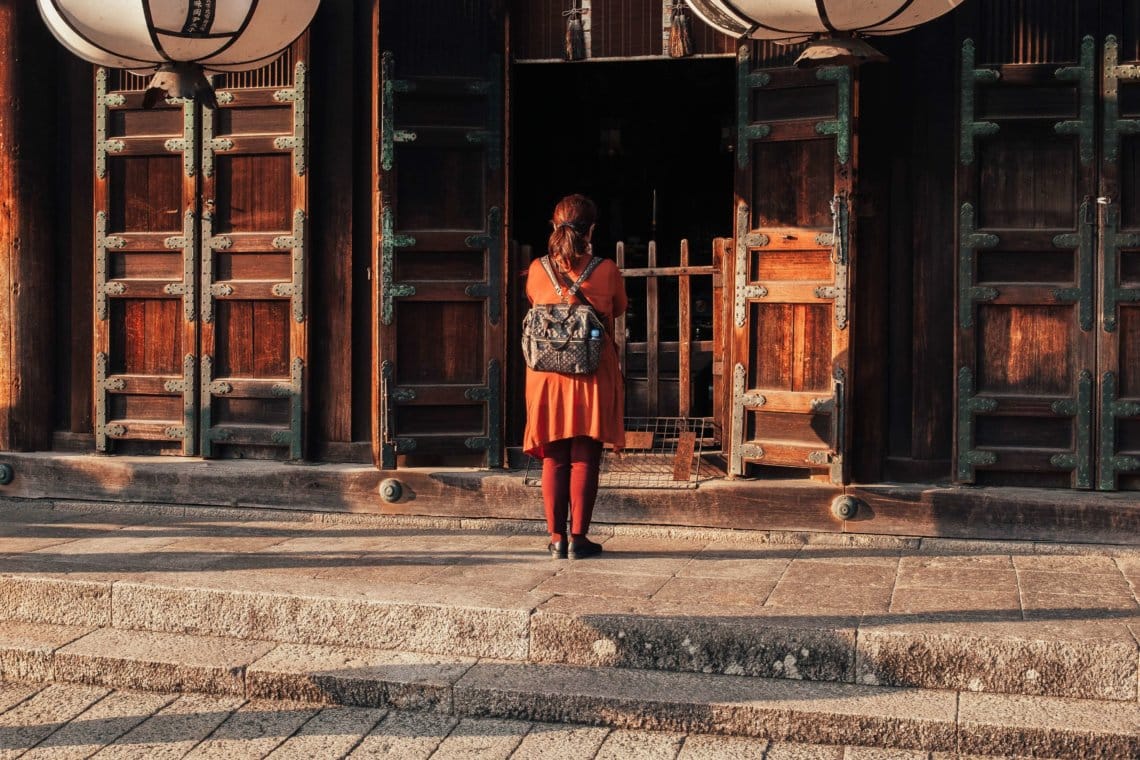
Weather and When to Visit Nara
Like the rest of Japan, Nara is a year-round destination, with each season bringing its own particular highlights and festivals.
Spring is one of the most beautiful seasons in which to visit, particularly when the cherry blossoms are in bloom. This usually occurs at the end of March or the beginning of April (the exact timing can be a bit unpredictable) and sees Nara burst into a sea of delicate pink and white flowers that last for just a fleeting couple of weeks.
One downside to visiting during sakura season is that the city is much busier. If you’d rather opt for a quieter trip, mid to late May is a pleasant alternative, with warm temperatures and lush greenery to enjoy.
The rainy season then occurs around June, and whilst the rain is not torrential enough to be a deal-breaker (and does reduce the crowds!), you may want to avoid this period.
Summers in Nara tend to be hot and humid but festival-filled, giving way to the more refreshing autumn season in mid-September. This is another fantastic time to visit thanks to the great weather and stunningly vibrant colours of the changing leaves.
Naturally, this also means more tourists, but if you avoid the peak fall foliage season in November, you can still enjoy the beautiful scenery without it being too busy.
Winter can be chilly but tends to be bright and dry, so if you wrap up warm, it’s still a lovely time to explore what the city has to offer.
One final piece of advice: It’s best to avoid the New Year’s holiday at the start of January, Golden Week (end of April and the beginning of May), and the August Obon holiday period if you can help it. These are peak travel times all across Japan, meaning that accommodations and flights are more expensive and everywhere is much more crowded than usual.
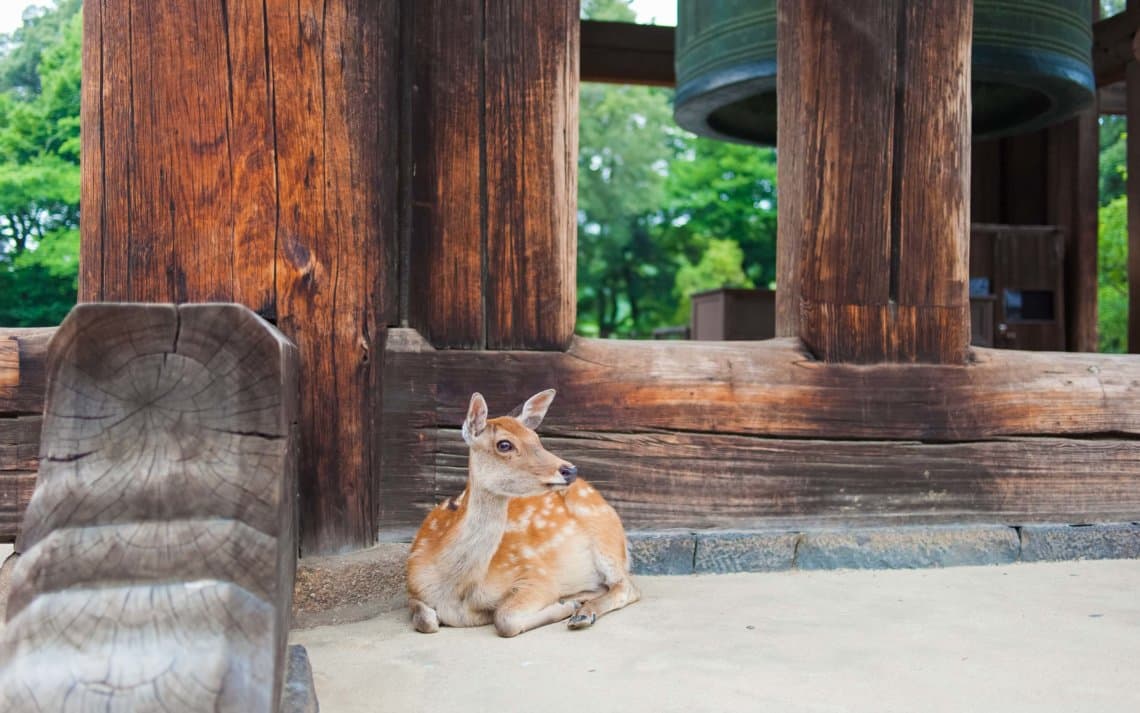
Getting to Nara
There are two main train stations in Nara, making the city very easily accessible. Both stations are called Nara, but are distinguished by the train lines they serve: JR (Japan Railways) and Kintetsu. This can be a little confusing for first-time visitors, but luckily the stations are only a 10-15 minute walk from each other.
If you have a JR Pass, it’ll be more economical to use JR Nara station, however Kintetsu Nara is closer to the city’s main attractions.
For more information, don’t miss our guide to getting around Japan.
Kyoto to Nara
Direct trains run from Kyoto station to both JR Nara and Kintetsu Nara. The journey to JR Nara takes approximately 50 minutes, with trains running every 30 minutes.
For Kintetsu Nara the quickest option is the 35-minute limited express train; however this is about twice as expensive as the normal trains. The cheaper option is to take a standard Kintetsu line train (either direct or with a transfer at Yamato-Saidaiji), which still only takes about 45 minutes.
Osaka to Nara
Direct trains run to JR Nara from Osaka station every 15 minutes, taking just under an hour. Alternatively, you can get directly to Kintetsu Nara from Osaka’s Namba station in 30-45 minutes, depending on which train you catch.
Tokyo to Nara
Nara doesn’t have its own shinkansen station, so if you’re traveling from Tokyo, the best option is to catch the bullet train to Kyoto and follow the directions above.
Getting Around Nara
Nara is a very compact city, and most of its major attractions are within walking distance of one another. There are also local buses that run to the main sites, or alternatively you can hire a bicycle if the weather is nice.
Things to Do in Nara
As a relatively small city, Nara definitely punches above its weight when it comes to sightseeing spots and attractions. So whether you’re here for just a few hours or for several days, you won’t have any trouble filling up your itinerary.
Let’s begin with the stars of the show:
Nara Park
To spend some quality time with Nara’s delightful deer, Nara Park is the place to go. This pleasant grassy expanse dotted with groves of trees and peaceful ponds is where they choose to spend most of their time, posing for pictures and bowing to visitors (yes, really!) in the hope of procuring food.
If you want to feed the deer, you can purchase some shika senbei (deer crackers) from numerous nearby stalls or souvenir shops for just JPY 150. Be warned: When they see that you have them, you will soon find yourself surrounded by new best friends, and although not aggressive, the deer can get quite pushy.
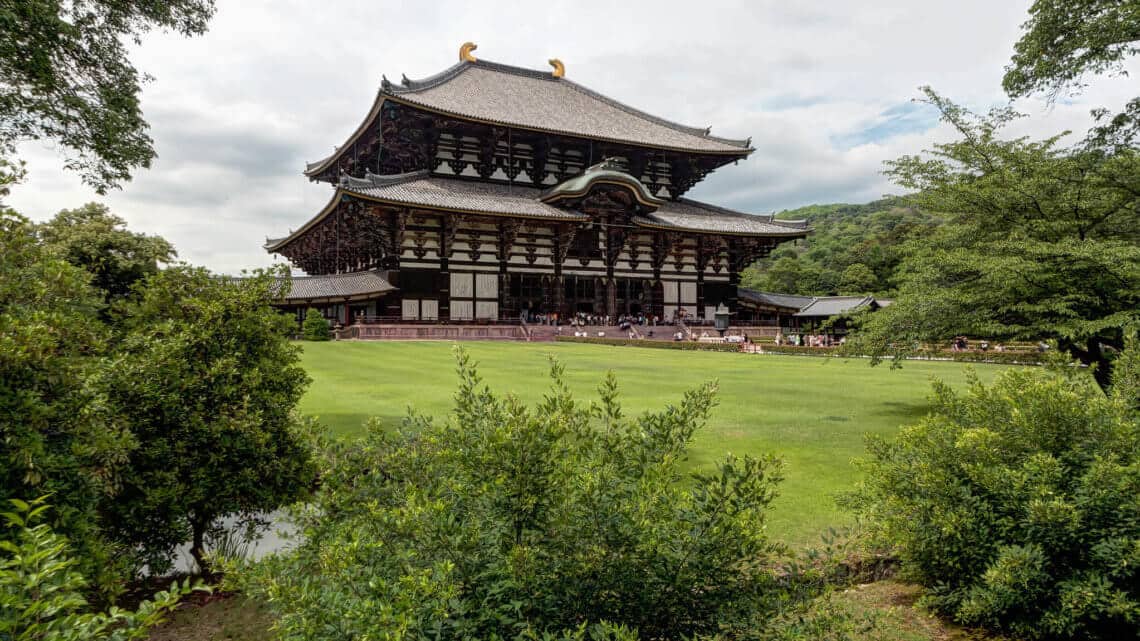
Todaiji Temple
One of the most famous and significant temples in the whole of Japan, Todaiji more than lives up to its reputation. The imposing main hall is the largest wooden building in the world, and inside you’ll find a stunning 15-meter-tall bronze statue of Buddha. Genuinely impressive, this is one sight you really don’t want to miss.
Apart from the paid area, there are several smaller buildings nearby that are part of the temple complex and can be visited for free. These include Nigatsudo Hall, which offers a lovely view out over the city from its spacious balcony, and Nandaimon Gate, guarded by two ferocious-looking guardian deities.
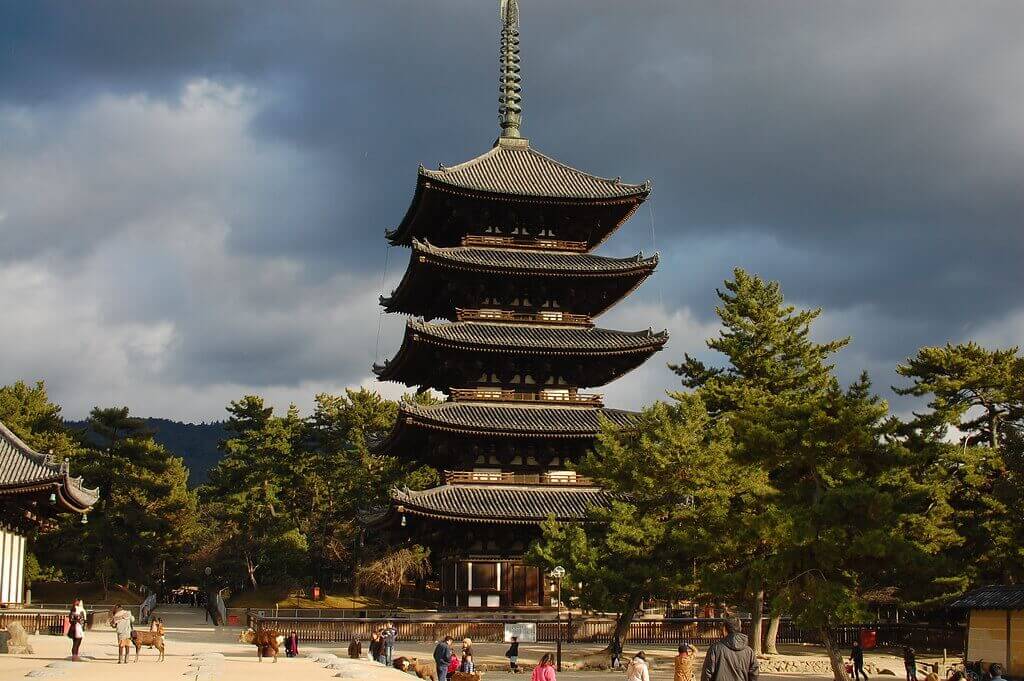
Kofukuji Temple
As you wander through the streets of Nara, there’s one landmark you can’t help but notice: the soaring five-storied pagoda of Kofukuji temple. At 50 meters high, it’s the second-tallest wooden pagoda in the country and has become just as much a symbol of the city as the deer frolicking at its feet.
There are 11 temple buildings to explore, clustered around the pagoda, including the newly-renovated Central Golden Hall and a museum with a world-renowned collection of Buddhist artwork.
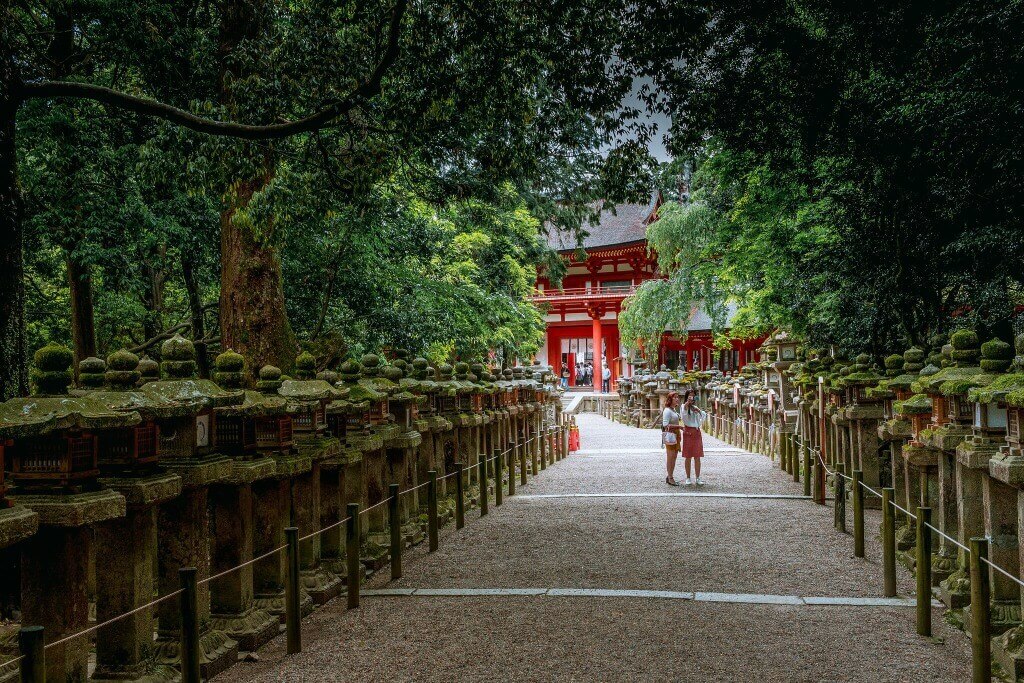
Kasuga Taisha Shrine
This mysterious Shinto shrine, concealed amid the trees in the heart of Nara Park, is one of the city’s most beautiful attractions. Famous for the thousands of stone and bronze lanterns that line its pathways and hang suspended from its buildings, Kasuga Taisha is an ethereal wonderland.
It’s definitely worth paying the small fee to enter the inner courtyard, with its striking red architecture and corridors of intricately designed lanterns. Particularly memorable is the single room kept entirely in darkness save for their otherworldly glow.
For those who have more time available, or prefer to avoid the most crowded sights, here are some recommendations for places slightly off the beaten track:
Mount Wakakusa
To the east of Nara rises the gentle grassy peak of the 342-meter-high Mount Wakakusa. The hike to the summit is steep in places but not too challenging. The paths are very well maintained, and there’s plenty of space to sit and admire the panoramic view out across the cityscape below.
Having a nominal JPY 150 entrance fee generally keeps the area blissfully peaceful, and in the springtime, it’s one of the best areas for cherry blossom viewing. It’s also the location of one of Nara’s most dramatic festivals, the fiery Yamayaki (see below).
Isuien and Yoshikien Gardens
This neighboring pair of classical Japanese gardens are a calming oasis in the heart of the city, offering visitors an ideal place for contemplation.
As you wander through the immaculate scenery, take the time to admire all the different garden styles on display, from moss gardens to pond gardens, and gardens that use the surrounding natural landscape as “borrowed scenery.” Afterward, take a break at Isuien’s tea house to enjoy some traditional refreshments.
Nara National Museum
Perfect for a rainy day, the Nara National Museum has some fantastic displays of Japanese Buddhist paintings, statues, writings, archaeological artifacts, and other types of artwork.
Besides the permanent exhibition, there are a number of interesting special and feature exhibitions hosted throughout the year, so drop by the information desk to find out exactly what’s on during your stay.
Naramachi
Strolling through this traditional merchant neighbourhood in the south of the city is like taking a walk through the Nara of old.
The narrow alleyways are lined with preserved machiya townhouses, many of which have been converted into boutique shops, quaint cafés, restaurants, and even a few museums. Feel free to explore, lose yourself in the atmosphere, and imagine you’ve stepped back in time to Edo-era Japan!
Festivals
Like most Japanese cities, Nara hosts its fair share of festivals throughout the year. If your visit happens to coincide with one, they are a fantastically enjoyable insight into Japanese culture and guaranteed to provide you with an unforgettable experience. Here are three of Nara’s best:
- Wakakusa Yamayaki: At the end of January, you can enjoy a spectacular fireworks display as the slopes of Mount Wakakusa are set ablaze in this breathtaking celebration.
- Nara Rurie: Every February Nara transforms into an iridescent wonderland as ethereal illuminations light up the city.
- Nara Tokae Lantern Festival: During the hot August evenings, Nara bathes in the soft glow of 20,000 flickering lanterns in a scene straight out of a fairytale.
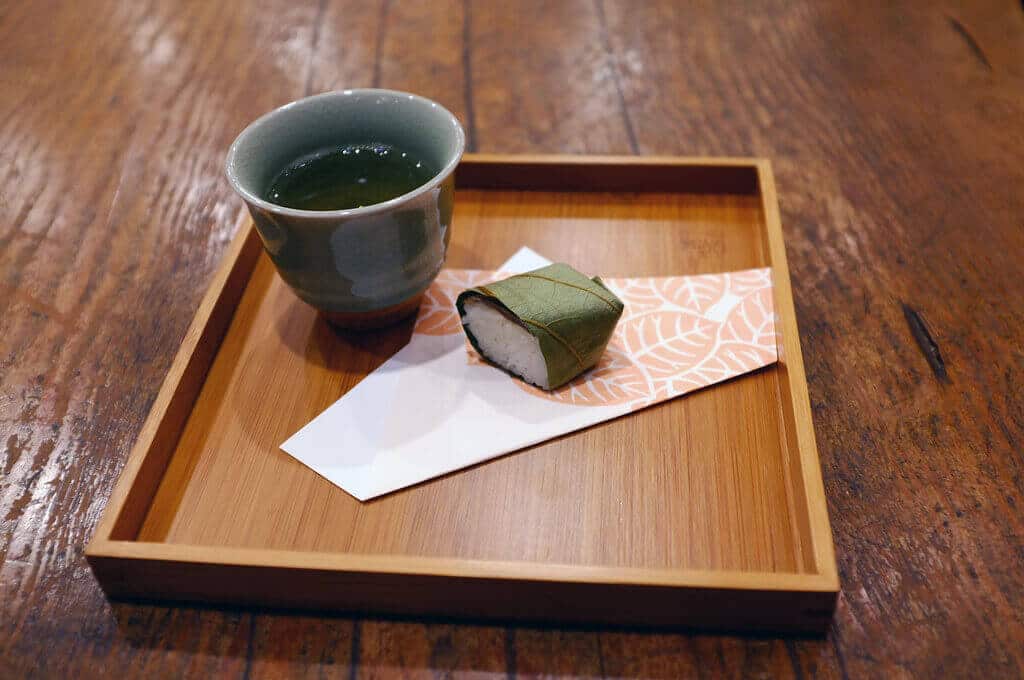
Local Food and Drink
Japan is famous as a mecca for foodies, and Nara is no exception. Here are some local delicacies to look out for during your trip:
- Mochi: Different varieties of these sticky rice cakes can be found all across Japan, but Nara’s Nakatanidou mochi shop has achieved fame on YouTube, thanks to the unbelievable (and competition-winning) speed at which they pound the rice. Watch the live displays in the shop front, and then sample the finished product fresh from the counter.
- Sake: Nara prefecture is considered by many to be the ancient home of sake (Japanese rice wine). Harushika offers tasting sessions of its tipples for just JPY 500, and it’s also possible to tour the brewery on weekends (reservations required).
- Craft beer: Nara is home to several local beer breweries, including Naramachi Brewery, Nara Brewing Company, and Golden Rabbit Beer. LBK Craft by Kintetsu Nara station is a great place for hopheads to sample a range of local brews.
- Narazuke: Made by pickling vegetables in the leftover lees from sake making, these have a darker color and extra rich flavour compared to other pickles.
- Kakinoha sushi: This bite-size sushi made from fish and rice wrapped up in a persimmon leaf is said to represent the natural trio of sea, land, and mountains.
Shopping
Countless shops jostle for customers up and down Nara’s streets, from souvenir stores selling more deer-covered merchandise than you thought possible to more elegant artisan boutiques.
Some of the most unique items to look out for include Akahada pottery, lamps made from locally-grown cedar and cypress wood, and delicate uchiwa fans—handmade from bamboo and dyed washi paper.
Nara: An Endlessly Rewarding Destination
As you can see, Nara is a fantastic place to visit—but it doesn’t end there. The city is also a great base for exploring the rest of the prefecture, particularly if it’s not your first time here.
From ancient temples and historical towns to sacred mountains and inspiring natural landscapes, the wider Nara prefecture has so much to offer yet is often overlooked by tourists. If you have the time to indulge your wanderlust, it can be a really rewarding destination.
So hopefully this guide has given you a helpful overview of this beautiful, deer-filled city, as well as some travel inspiration for your next trip. And if you’re planning a holiday to Japan, be sure to include Nara on your itinerary—you won’t regret it!


